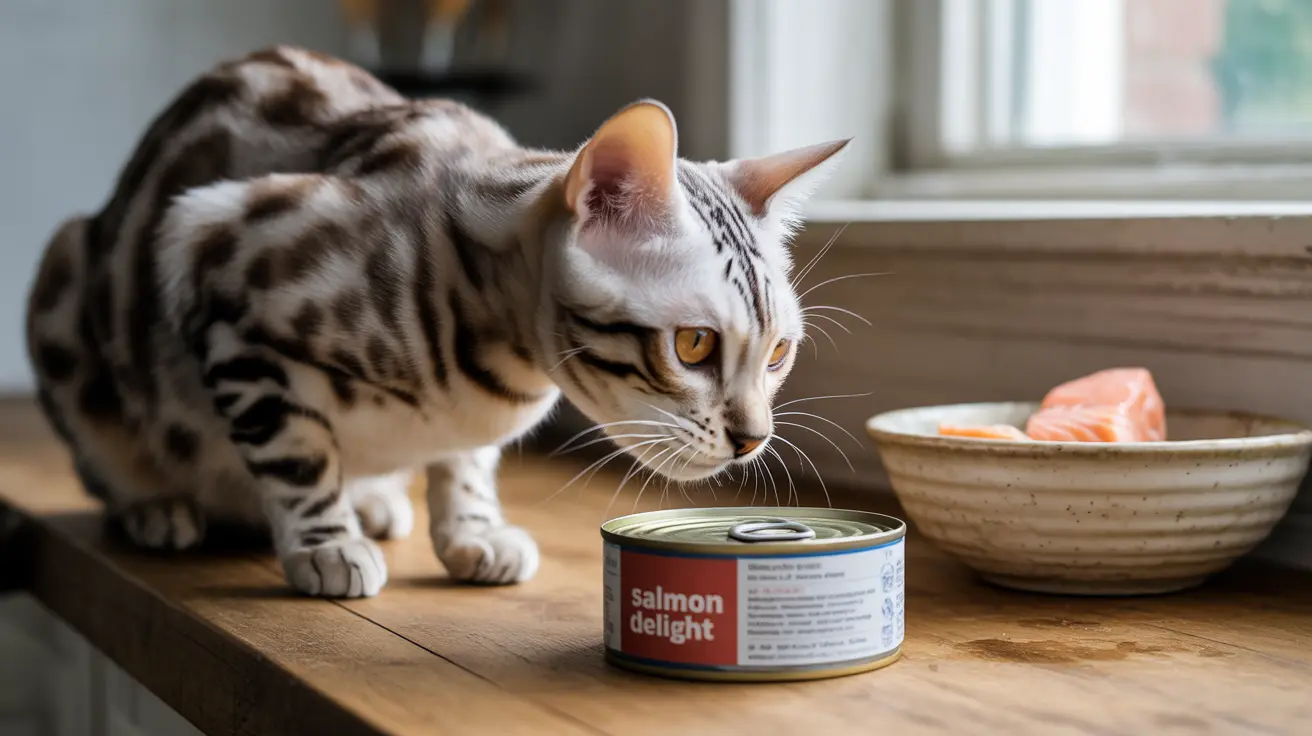Many cat owners wonder about feeding their feline friends canned salmon, given cats' natural attraction to fish. While salmon can offer valuable nutrients, not all canned varieties are safe for your furry companion. This comprehensive guide will explore the benefits, risks, and best practices for serving canned salmon to cats.
Understanding the Benefits of Canned Salmon for Cats
Canned salmon can provide several nutritional benefits when served properly. It's rich in protein, essential for maintaining healthy muscles and supporting overall feline health. The omega-3 fatty acids found in salmon, particularly EPA and DHA, contribute to healthy skin, coat, and joint function.
Additionally, salmon contains important vitamins and minerals, including vitamin D, vitamin B12, and selenium. These nutrients support immune function and help maintain optimal health in cats.
Safety Concerns and Potential Risks
Sodium Content and Additives
Most canned salmon meant for human consumption contains high levels of sodium and preservatives that can be harmful to cats. Excessive sodium intake can lead to:
- Dehydration
- High blood pressure
- Kidney problems
- Sodium ion poisoning
Physical Hazards
Canned salmon often contains bones that, while softened through processing, can still pose choking risks or cause internal injuries. Always thoroughly check and remove any bones before feeding salmon to your cat.
How to Safely Feed Canned Salmon to Cats
Choosing the Right Product
When selecting canned salmon for your cat:
- Choose varieties packed in water, not oil
- Avoid products with added salt or seasonings
- Look for bone-free options
- Consider salmon-based commercial cat foods instead
Proper Portion Size and Frequency
Canned salmon should only be offered as an occasional treat, not as a regular meal replacement. Limit portions to small amounts, typically no more than a tablespoon, once or twice a week at most.
Commercial Alternatives
If you want to give your cat the benefits of salmon, consider specially formulated commercial cat foods containing salmon. These products are specifically designed to meet feline nutritional needs while eliminating common risks associated with human-grade canned salmon.
Frequently Asked Questions
Is it safe to feed my cat canned salmon, and what should I watch out for?
Yes, cats can eat canned salmon occasionally if it's packed in water, unseasoned, and properly deboned. Watch out for added salt, preservatives, and bones, which can be harmful to your cat.
How often can I give my cat plain canned salmon as a treat?
Plain canned salmon should be limited to once or twice a week in small portions (about 1 tablespoon). It should never replace your cat's regular balanced diet.
What are the health risks of feeding canned salmon with added salt or spices to cats?
Canned salmon with added salt or spices can cause sodium poisoning, digestive issues, and even toxicity in cats. Seasonings like garlic and onion are particularly dangerous and can cause severe illness.
How can I safely prepare canned salmon for my cat to avoid bones and harmful ingredients?
Carefully check and remove all bones, drain the liquid, and ensure there are no seasonings or additives. Choose salmon packed in water and thoroughly break apart the flesh to check for bone fragments.
Are commercial salmon-based cat foods better than human canned salmon for my cat's nutrition?
Yes, commercial salmon-based cat foods are generally safer and more nutritionally complete than human canned salmon. They're specifically formulated to meet feline dietary requirements while eliminating common risks.
Conclusion
While cats can eat canned salmon, it's crucial to choose the right type and serve it in moderation. For optimal safety and nutrition, consider commercial salmon-based cat foods instead of human-grade canned salmon. Always consult with your veterinarian before making significant changes to your cat's diet.






